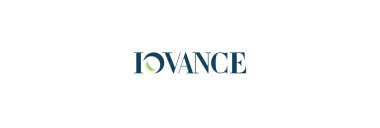Boeing Delivers Rocket Stage to NASA, Will Launch First Humans Around the Moon Since Apollo
Rhea-AI Summary
Boeing [NYSE: BA] has delivered the second core stage of the Space Launch System (SLS) rocket to NASA for the Artemis II mission, marking a significant milestone in the program. The 200-foot-tall core stage, built at NASA's Michoud Assembly Facility, will be transported to Kennedy Space Center for integration with other components. This Boeing-built rocket stage is important for sending the first crew to lunar orbit in 50 years, with the launch scheduled for 2025.
The SLS rocket, powered by four RS-25 engines and two solid-fueled booster rockets, will provide 8.8 million pounds of thrust. It is the only rocket capable of carrying both crew and large cargo to the moon and beyond in a single launch, showcasing Boeing's continued leadership in space exploration technology.
Positive
- Boeing delivered the second core stage of the SLS rocket for NASA's Artemis II mission
- The SLS rocket is the only one capable of carrying crew and large cargo to the moon in a single launch
- Boeing's involvement in the Artemis program reinforces its position as a leading aerospace company
Negative
- None.
News Market Reaction 1 Alert
On the day this news was published, BA declined 0.65%, reflecting a mild negative market reaction.
Data tracked by StockTitan Argus on the day of publication.
The Boeing-built rocket stage, which is the largest component of the Artemis II mission, will be loaded onto the Pegasus barge and transported 900 miles to NASA's Kennedy Space Center. Once there, it will be integrated with the other Artemis II components, including the upper stage, solid rocket boosters, and NASA's Orion spacecraft inside the Vehicle Assembly Building. This integration is a crucial step in preparation for the Artemis II launch, scheduled for 2025.
"Boeing-built products helped land humankind on the moon in 1969, and we're proud to continue that legacy through the Artemis generation," said Dave Dutcher, vice president and program manager for Boeing's SLS program. "Together, with NASA and our industry partners and suppliers, we are building the world's most capable rocket and paving the way to deep space through America's rocket factory in
The delivery of Core Stage 2 signifies a major achievement in the development of the SLS rocket. This core stage, measuring over 200 feet tall and powered by
SLS is the only rocket capable of carrying crew and large cargo to the moon and beyond in a single launch. Its unmatched capabilities will deliver human-rated spacecraft, habitats, and science missions to the moon, Mars and beyond.
As a leading global aerospace company, Boeing develops, manufactures and services commercial airplanes, defense products and space systems for customers in more than 150 countries. As a top
Contact:
Megan Gessner
Boeing Communications
+1 256-640-3036
Megan.gessner@boeing.com
Boeing Media Relations
media@boeing.com
![]() View original content to download multimedia:https://www.prnewswire.com/news-releases/boeing-delivers-rocket-stage-to-nasa-will-launch-first-humans-around-the-moon-since-apollo-302198683.html
View original content to download multimedia:https://www.prnewswire.com/news-releases/boeing-delivers-rocket-stage-to-nasa-will-launch-first-humans-around-the-moon-since-apollo-302198683.html
SOURCE Boeing








